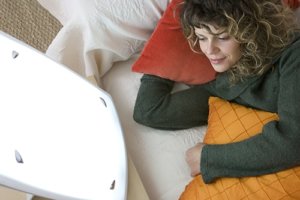One of the most common mental health disorders in the United States is depression. Although it impacts many people, there isn’t a one-size-fits-all way to resolve this condition. Fortunately, there are a lot of options available at PACE Mental Health Houston. Using light therapy is just one of the many potential ways to address depression.
What Is Light Therapy?
 There is a lot of evidence to suggest that spending time in bright light can reduce symptoms of depression. It is worth noting that many people recognize the value of light therapies for seasonal depression, but it can work for many different depressive disorders.
There is a lot of evidence to suggest that spending time in bright light can reduce symptoms of depression. It is worth noting that many people recognize the value of light therapies for seasonal depression, but it can work for many different depressive disorders.
Light therapy works just like the name suggests. Individuals are exposed to bright light, often via lightboxes, for set periods of time. The light can impact everything from your sleep cycle to your energy levels and even your metabolism.
Many people find that depression makes them tired. Worse still, it can cause insomnia. Using light therapy for depression, however, can counteract some of those sleep problems. It gives people more energy during the day and helps them sleep better at night.
Addressing SAD
The most obvious use of lightboxes is for SAD, or seasonal affective disorder. There is no denying that seasonal depression has a lot to do with reduced daylight. If you live in an area where you just get a few hours of sunlight each day, then it is harder to get outdoors and be in the sun.
Many people with traditional work hours arrive at work in the dark and then leave in the dark, leaving little or no time for natural light. Using a lightbox can be a great way to minimize the effects of seasonal depression. Although therapy with medical-grade lightboxes is incredibly useful, many people also use lightboxes in their homes or even in their office. There are few risks and plenty of benefits with this therapy, making it an excellent option for all types of environments.
Benefits of Using Light Therapy For Depression
If you’re struggling with depression, then light therapy can certainly help. There are four major benefits to using light therapy: Better mood, better sleep, more energy, and increased focus. Depression impacts each of these areas, and light therapies can be tremendously helpful.
Experts recommend that people use lightboxes during daylight hours. If possible, therapy should begin in the morning or at midday. This mimics natural sunlight, and it boosts energy when people need it the most.
Light therapy doesn’t just help people have more energy during the day. It also helps them feel less depressed, and it can even improve focus and concentration. Best of all, it encourages better sleep at night. This helps to repeat the positive cycle for people the following day.
Risks and Contraindications
There are very few risks involved with light therapies. However, medical professionals can help you understand the best lightboxes to use, the right level of light for you and how to protect your eyes in the process. Intensity, timing, and duration are all essential to monitor during therapy.
Almost everyone can benefit from lightbox therapy. However, some people shouldn’t use this particular form of therapy. People with lupus or skin cancer, for example, need to be careful with any UV sources. Those with bipolar disorder may also need to consider alternative options.
Overcoming Depression at PACE Mental Health
Both children and adults alike can benefit from light therapy for depression. Whether you’re looking for Houston childhood depression therapy or support for adults, PACE Mental Health Houston can help. In addition to light therapies, you can expect a wide range of therapies and support for co-occurring disorders. At PACE Mental Health Houston, you can get help for all of the following:
Light therapy is one way to reduce or even eliminate the symptoms of depression. At PACE Mental Health in Houston, Texas, you can pair lightbox therapy with talk therapy, group therapy, and more to overcome depression. Call *DM_DirectNumber format=period link=true* to learn more and to start living your best life.
